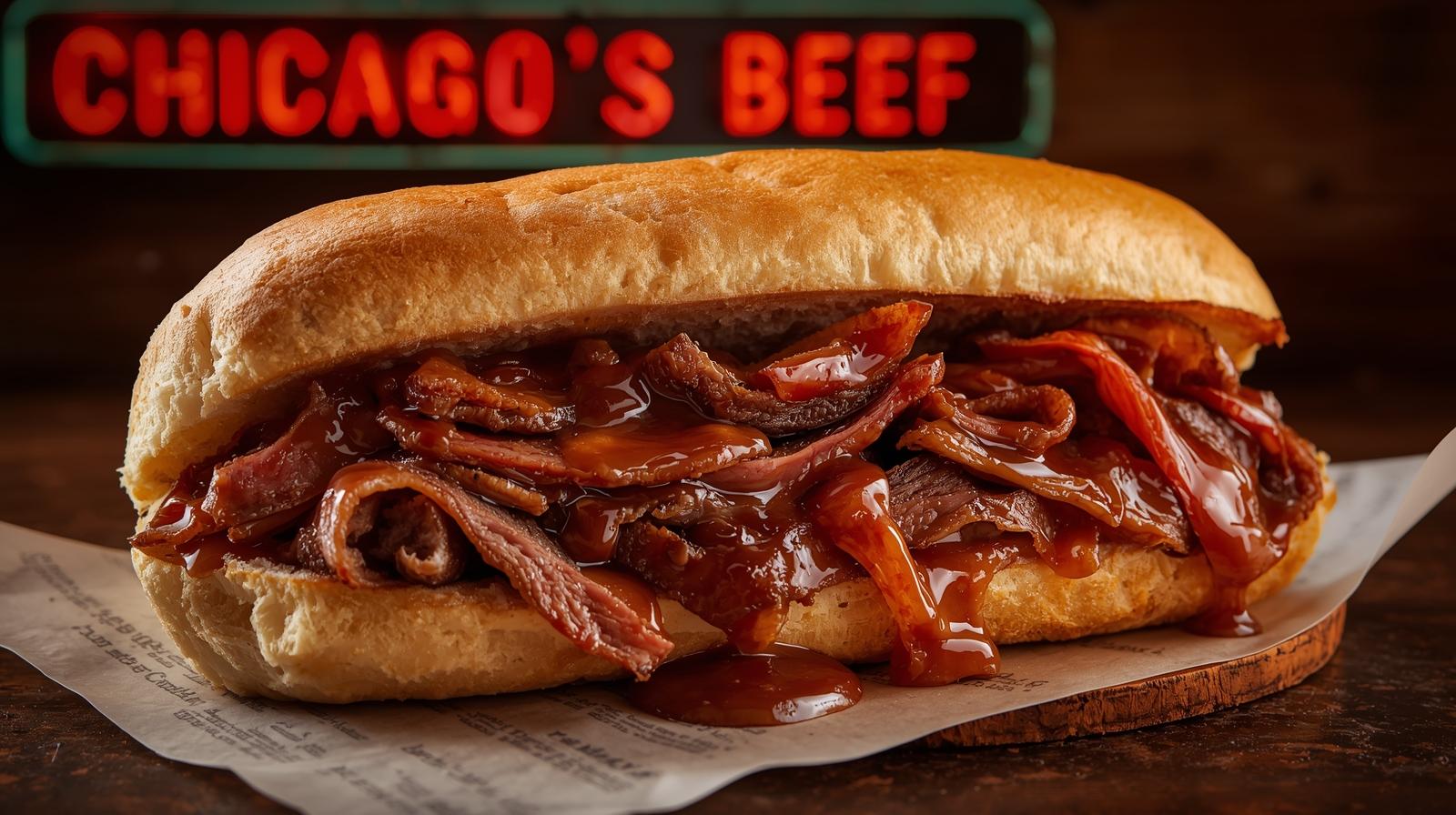
Hot or Sweet? The History of Chicago’s Italian Beef Sandwich
Published on September 25, 2025
Deep-dish pizza is usually the first food that comes to mind when people think about Chicago cuisine. And if many can’t name the seven condiments that comprise the Chicago-style hot dog, they know that ketchup, for those over the age of 8, is strictly forbidden. But for most of its existence, the Italian beef sandwich has flown beneath the radar of many foodies from outside the city.
By Dave Lifton (@daveeatschicago)
Until 2022, that is. The first season of the award-winning FX show The Bear, set in a River North fast-food restaurant, introduced it to the nation at large. But what is it? Basically, it’s braised beef served on a roll and customized in a couple of ways. As far as regional beef sandwiches go, it’s beefier than a Philly cheesesteak and messier than the Los Angeles-created French dip. Its closest counterparts are the roast beef po’ boy in New Orleans and Buffalo’s beef on weck.
There are competing stories as to the true inventor of the Italian beef, but there’s a general consensus as to its origins. In Chicago’s Italian community, marriages were celebrated with “peanut weddings,” so named because the food served would consist of inexpensive, filling foods, such as peanuts. By the end of World War I, it became common for these weddings to include beef sandwiches made by slow-roasting cheap cuts of meat (one theory suggests that it was because Italians working at the Union Stock Yards could get them at a discount).
The question of who was the first to do it is where there’s disagreement. According to Chris Pacelli Jr., his granduncle Anthony Ferreri, a street peddler who sold sandwiches, attended a peanut wedding where these sandwiches were served, but with a thick cut. Ferrari decided to slice it thinner to make the meat go further – a necessity during the Great Depression – added it to his selection on his truck and began catering weddings.
In 1938, Ferreri’s son Al, a gambler who’d served time in jail, decided to sell his father’s sandwiches as a front for his bookie joint. Al’s #1 Italian Beef was born – eventually becoming a legitimate business – and has expanded to several locations throughout Chicago.
The other take is that Pasquale Scala, an Italian immigrant who opened his own meat-packing company in 1925, was the first to slice it thin and catered weddings with it. Scala never opened a restaurant, but his company provided the meat to many Italian beef joints and sold it at local grocery stores until its closure in 2014.
Over the years, two ways to customize an Italian beef to the diner’s individual taste have emerged. The first is with the level of heat. Customers can order it “sweet” – not mild – where the sandwich is topped with grilled bell peppers, and/or “hot,” where giardiniera is added, a relish of diced, pickled vegetables –at least celery, but also often carrots and sometimes cauliflower – and peppers (typically jalapeños). For those who order it hot, the quality of the giardiniera is as important as the flavor of the beef.
The second is with the amount of the jus that can be added to the sandwich. There’s “wet,” which means that some broth from the tray where the beef was sitting makes its way onto the bread, or “dipped,” where the whole sandwich is quickly submerged in the liquid, permeating its way into the bread. Some restaurants will offer dry or dip just the ends.
But where to get an Italian beef? Many experts believe Johnnie’s Beef in suburban Elmwood Park has the best. Within the city limits, local institutions like Al’s, Portillo’s and Buona can be found downtown. Also, lovers of The Bear have been making pilgrimages to Mr. Beef in River North. The show’s creator, Chris Storer, is a longtime friend of owner Chris Zucchero and used his restaurant as the inspiration, and the building’s exterior has been used in the show.
Although a traditionally made beef reigns supreme in Chicago, some restaurants are experimenting with the formula. The Viet Dip at Phodega in Wicker Park substitutes the condiments on a banh mi for the giardiniera and adds a cup of pho broth for dipping. Ukrainian Village’s Kasama puts a Filipino spin on the beef-and-sausage combo with pork adobo and longanisa sausage. In the Willis Tower, Kindling makes its Italian beef with wagyu, and Gibson’s Italia (West Loop) uses prime rib.
And whether you like it wet or dry, hot or sweet, as with the hot dog, don’t even consider asking for ketchup.
The author always orders hot but will vary between wet and dipped based on his preference that day

The Adventure starts when you say it does.
All eATLAS Adventures are designed and built by experienced eATLAS Whoa!Guides. They're always on. Always entertaining. And always ready to go.
Check out our Adventures!